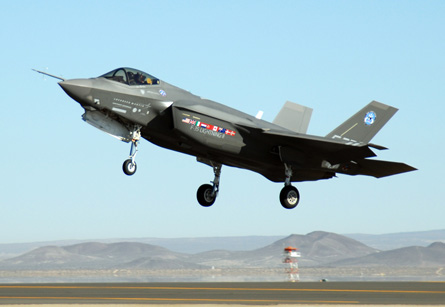Australia plans to buy up to 100 Lockheed Martin F-35 Joint Strike Fighters (below) as part of a comprehensive plan to revamp its defence force capabilities and prepare for a changing security environment in the Asia Pacific over the next 20 years.
This announcement was part of the country’s long-awaited defence white paper, which spells out its military strategy until 2030. It projects that the defence budget of A$22.7 billion ($16.6 billion) will increase by 3% annually until 2017-2018 and then by 2.2% annually until 2030 to rectify the current “shortfalls and underinvestment”, says defence minister Joel Fitzgibbon.
The Royal Australian Air Force, he adds, will be “far more versatile and far more capable” with a “wider range of advanced surveillance, transport and air combat options” as a result. Much of this hinges on the acquisition of the F-35s, which have been confirmed as the backbone of the RAAF’s air strike capability in the future.

There was an emphasis on airlift capability with
Eight new maritime patrol aircraft will be bought to provide advanced antisubmarine, anti-surface warfare, and sophisticated maritime search capabilities. These will be supplemented by seven new high-altitude, long-endurance unmanned aerial vehicles to replace the Lockheed Martin AP-3C Orions.

Despite ongoing problems with the platform,
The navy will get another six new NH Industries NH-90 multi-role helicopters to replace its Westland Sea King fleet, and there will be “added urgency” to buy at least 24 new naval combat helicopters. These will be equipped with dipping sonars that allow them to detect submarines at greater ranger and torpedoes that allow them to attack and destroy enemy vessels. “This project will be pursued as a matter of urgency to overcome the current deficiencies in the Navy’s aviation fleet,” says Fitzgibbon.
Additional emphasis will be placed on increasing the army’s unmanned aerial vehicle capabilities, and the service will also replace its fleet of six Boeing CH-47D Chinook helicopters with a new fleet of seven Boeing CH-47F aircraft. “With a lift capacity of about three times that of a [Sikorsky] Blackhawk, the Chinook is a critical component of the Army Aviation fleet, providing support ranging from tactical and intra-theatre battlefield lift for our soldiers to regional humanitarian assistance” Mr Fitzgibbon said.
The government says that it will prepare a new defence white paper at intervals of no more than five years to assess
“As the Asia-Pacific region becomes more prosperous, we will see an increase in the region’s military capability,” says Fitzgibbon. “Intra-state conflict will be an enduring feature of conflict in the period to 2030 and the Australian Defence Force needs to be prepared to play its part in dealing with such contingencies.”
Source: FlightGlobal.com























